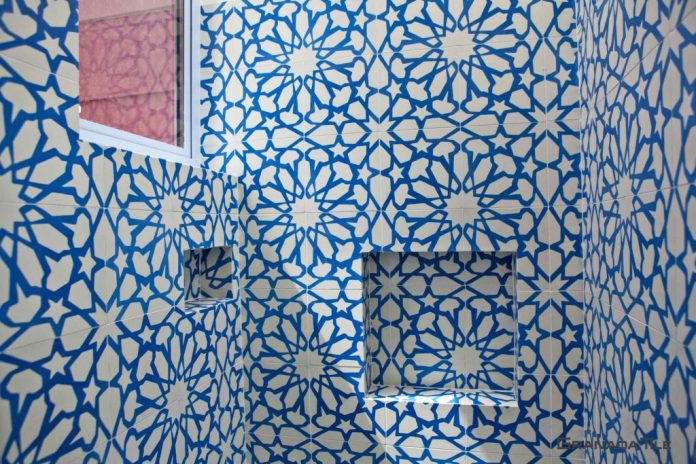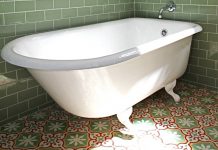Installing a new cement tile shower (or updating your existing shower into a cement tile shower) is a multi-step process. In a simplified manner, creating a cement tile shower requires you to separate the shower from the rest of the bathroom, lay the foundation, and add the desired tiles.
Getting the desired result is a little more involved, depending on how far along your shower already is:
1. Frame the desired shower area. Regardless of what your flooring is like for a shower, it needs to be separated from the rest of the bathroom, otherwise you’ll have fun dealing with flooding every time you or your client takes a shower.
This can be accomplished by using wooden lumber to literally make a frame around the area you want to be your shower. If you already have a shower installed in your home, then you may be able to skip a few steps, based on how far along your shower is developed.
2. If you already have a shower in your home, including a frame and foundation, then you don’t have much further to go. Your shower space may already have flooring or tiling, so at this point you’ll need to remove the unwanted parts of your floor. You can even choose to replace the base, depending on its current state and overall stability.
3. If you’re choosing to start from scratch, you’ll have to move onto the foundation: the cement slab that the tiles will rest on. However, before you even lay the cement foundation, you’ll need to lay down a special rubber membrane, which is what will hold your cement in place and prevent liquids from getting under the tiles. Another popular option is “hot mopping” the area with tar, which can seal and protect the area as well.
4. Once the rubber membrane is fully installed, cut out a small hole for the drain. The rubber membrane is important to keep any water that may leak through cement to funnel towards the drain.
5. Install the drain plate and drain. It is important to make sure the drain plate is properly bolted down and the drain screwed in while leaving room for the height of the concrete.
6. Create the concrete mixture. The desired consistency and mixture will vary based on the type of cement you choose to use and the manufacturer’s instructions/recommendations.
7. Begin to pour the cement mixture into the base of the shower. As you are applying cement on top of the rubber membrane, you’ll be creating a slight slope to make water during and after every shower to fall with ease into the drain at the center of the shower.
8. Wait for the concrete to cure, based on the manufacturer’s recommendations. As exciting as it may be for you to get started with installing your new tile, you want to make sure that the concrete is completely ready or you may find yourself having to start all over.
9. Once the curing process is finished, you now have a cement slab to work with and can begin to lay down your Granada cement tiles, based on the specific design and layout that you desire. Remember to follow all of the steps recommended by your tile installer or manufacturer (e.g., using the correct amount of set, the distance between tiles, the type and amount of grout to use, etc.).
One great way to increase the efficiency of your installation and ensure that the final product is what you want is to dry fit your tiles beforehand. Dry fitting involves laying out the tiles in the order and pattern you’d like before making anything permanent.
To get in touch with one of our team members, you can call us at (213) 788-4238, or send us an email at sales@granadatile.com.











